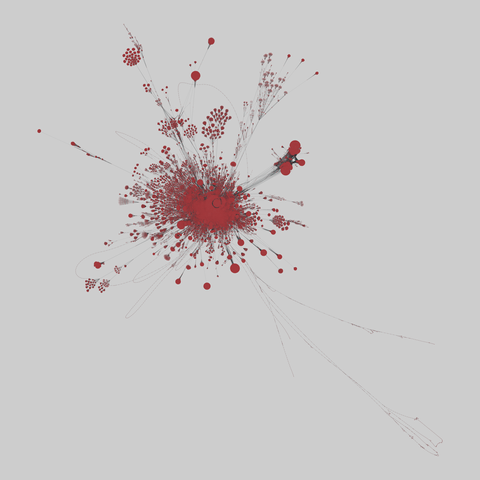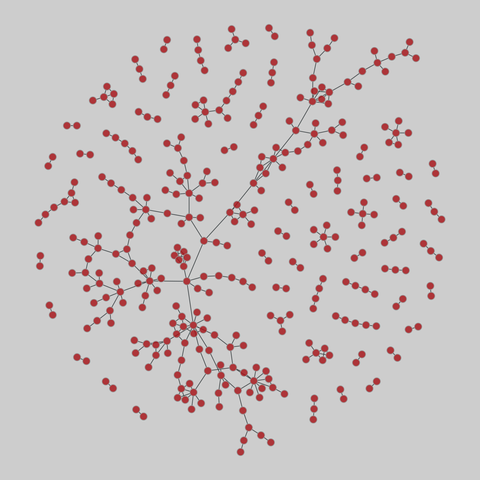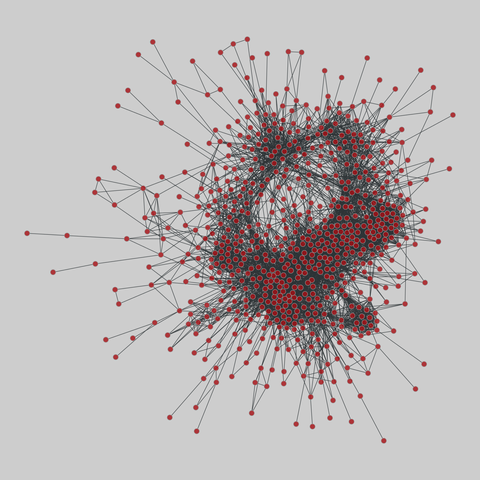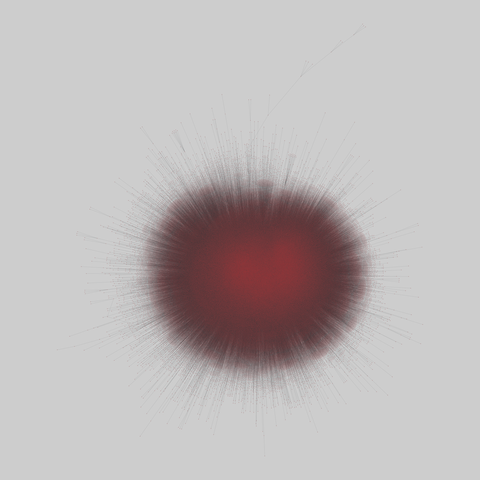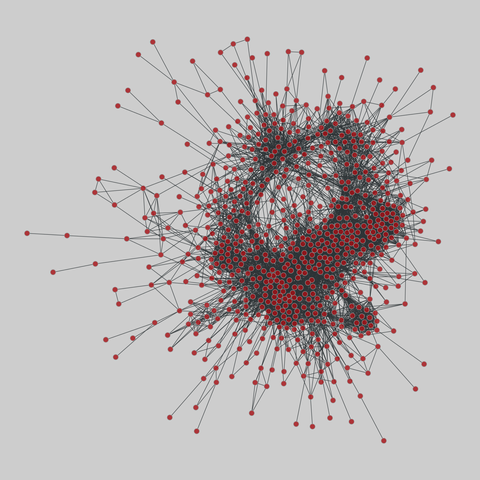2025-08-25 18:29:02
2025-08-25 18:29:02
2025-06-25 06:30:00
Bart Wullems of The Art of Simplicity shares his experience using Microsoft's .NET Source Browser to take a peek at a particular API's internals. The code documentation pages have links to the corresponding Github repositories where you can see exactly how any given function is implemented.
"Browse the .NET code base with the .NET Source Browser"
2025-09-21 18:58:18
2025-07-20 21:30:47
Every major US city has a private foundation supporting police,
with more than 250 nationwide, according to a 2021 report by research and activist groups Little Sis and Color of Change.
The foundations have been used to pay for surveillance technologies in cities like Baltimore and Los Angeles -- without being subject to public scrutiny, according to the report.
More than a year after a digital news outlet and a research group sued the Atlanta Police Foundation for alleged…
2025-09-17 10:05:30
Characterizing Phishing Pages by JavaScript Capabilities
Aleksandr Nahapetyan, Kanv Khare, Kevin Schwarz, Bradley Reaves, Alexandros Kapravelos
https://arxiv.org/abs/2509.13186 …
2025-08-20 09:29:30
TASER: Table Agents for Schema-guided Extraction and Recommendation
Nicole Cho, Kirsty Fielding, William Watson, Sumitra Ganesh, Manuela Veloso
https://arxiv.org/abs/2508.13404 …
2025-07-15 06:06:06
One of the many interesting pages in the Future Energy Scenarios 2025, published today by NESO (🇬🇧 National Energy System Operator).
It focuses on the why, how and what of demand side flexibility.
Key: reward consumers, build trust, automate and smart tariffs.
EV smart charging gateway to more residential flex.
#EV
2025-06-27 06:09:55
You can play with (a supercharged server-driven version of it) today with Kitten:
https://kitten.small-web.org/tutorials/dynamic-pages/
2025-07-14 07:58:52
A Versatile Dataset of Mouse and Eye Movements on Search Engine Results Pages
Kayhan Latifzadeh, Jacek Gwizdka, Luis A. Leiva
https://arxiv.org/abs/2507.08003
2025-09-10 12:33:47
My install instructions for KDE 6 Wayland on FreeBSD have been updated.
First of all I changed the base to KDE and KDE base apps, instead of just a very minimal install. This follows the recommended install by KDE more closely.
Second: the browser of choice has been changed to Vivaldi and I have included a how-to-update the script and make Vivaldi run under FreeBSD.
Which you can apply anywhere on FreeBSD of course ;-)
Thanks to all for the positive feedback!
2025-09-07 18:11:48
2025-07-09 08:41:54
"When we say monumental, you had better believe it; the 500 pages of this volume, laid out with astonishing detail (and a very small font size) summarize the history and evolution of computers from 1945 to 1990. Throughout these pages, Waldrop reveals that the backbone, the axis, the arrow, the orientation, the mastermind of all that history was none other than Lick himself: he was the incarnation of the phrase “being at the right place at the right time”."
2025-07-30 13:00:08
stanford_web: Webgraph (Stanford)
The web graph of Stanford University (stanford.edu), as collected in 2002. Nodes represent pages and directed edges represent hyperlinks between them.
This network has 281904 nodes and 2312497 edges.
Tags: Informational, Web graph, Unweighted
https://networks.skewed.de/net/s…
2025-09-15 09:56:51
Beyond Token Limits: Assessing Language Model Performance on Long Text Classification
Mikl\'os Seb\H{o}k, Viktor Kov\'acs, Martin B\'an\'oczy, Daniel M{\o}ller Eriksen, Nathalie Neptune, Philippe Roussille
https://arxiv.org/abs/2509.10199
2025-08-30 00:20:54
We are faced with psychopaths at the helm of our nation's public health, scientific and healthcare efforts.
They want to inflict pain and suffering.
It's a goal, not a by-product
https://skywriter.blue/pages/did:plc:bcen47iol6hccqoufvtk7wt6…
2025-08-06 10:30:40
Today I'm fixing about a gazillion little issues with our website, mostly for SEO reasons:
- All pages should now have a semantically relevant H1 Tag
- Found the last few page titles that didn't make sense and fixed them
- Our logo had no ALT attribute
- The font in the Survey Chart Tooltips was wrong
- Generally survey charts had wayyy to many decimals
- OpenGraph tags are weird but whatever
Keeping technical debt down is like brushing your teeth…
2025-07-06 12:45:11
So I've found my answer after maybe ~30 minutes of effort. First stop was the first search result on Startpage (https://millennialhawk.com/does-poop-have-calories/), which has some evidence of maybe-AI authorship but which is better than a lot of slop. It actually has real links & cites research, so I'll start by looking at the sources.
It claims near the top that poop contains 4.91 kcal per gram (note: 1 kcal = 1 Calorie = 1000 calories, which fact I could find/do trust despite the slop in that search). Now obviously, without a range or mention of an average, this isn't the whole picture, but maybe it's an average to start from? However, the citation link is to a study (https://pubmed.ncbi.nlm.nih.gov/32235930/) which only included 27 people with impaired glucose tolerance and obesity. Might have the cited stat, but it's definitely not a broadly representative one if this is the source. The public abstract does not include the stat cited, and I don't want to pay for the article. I happen to be affiliated with a university library, so I could see if I have access that way, but it's a pain to do and not worth it for this study that I know is too specific. Also most people wouldn't have access that way.
Side note: this doing-the-research protect has the nice benefit of letting you see lots of cool stuff you wouldn't have otherwise. The abstract of this study is pretty cool and I learned a bit about gut microbiome changes from just reading the abstract.
My next move was to look among citations in this article to see if I could find something about calorie content of poop specifically. Luckily the article page had indicators for which citations were free to access. I ended up reading/skimming 2 more articles (a few more interesting facts about gut microbiomes were learned) before finding this article whose introduction has what I'm looking for: https://pmc.ncbi.nlm.nih.gov/articles/PMC3127503/
Here's the relevant paragraph:
"""
The alteration of the energy-balance equation, which is defined by the equilibrium of energy intake and energy expenditure (1–5), leads to weight gain. One less-extensively-studied component of the energy-balance equation is energy loss in stools and urine. Previous studies of healthy adults showed that ≈5% of ingested calories were lost in stools and urine (6). Individuals who consume high-fiber diets exhibit a higher fecal energy loss than individuals who consume low-fiber diets with an equivalent energy content (7, 8). Webb and Annis (9) studied stool energy loss in 4 lean and 4 obese individuals and showed a tendency to lower the fecal energy excretion in obese compared with lean study participants.
"""
And there's a good-enough answer if we do some math, along with links to more in-depth reading if we want them. A Mayo clinic calorie calculator suggests about 2250 Calories per day for me to maintain my weight, I think there's probably a lot of variation in that number, but 5% of that would be very roughly 100 Calories lost in poop per day, so maybe an extremely rough estimate for a range of humans might be 50-200 Calories per day. Interestingly, one of the AI slop pages I found asserted (without citation) 100-200 Calories per day, which kinda checks out. I had no way to trust that number though, and as we saw with the provenance of the 4.91 kcal/gram, it might not be good provenance.
To double-check, I visited this link from the paragraph above: https://www.sciencedirect.com/science/article/abs/pii/S0022316622169853?via=ihub
It's only a 6-person study, but just the abstract has numbers: ~250 kcal/day pooped on a low-fiber diet vs. ~400 kcal/day pooped on a high-fiber diet. That's with intakes of ~2100 and ~2350 kcal respectively, which is close to the number from which I estimated 100 kcal above, so maybe the first estimate from just the 5% number was a bit low.
Glad those numbers were in the abstract, since the full text is paywalled... It's possible this study was also done on some atypical patient group...
Just to come full circle, let's look at that 4.91 kcal/gram number again. A search suggests 14-16 ounces of poop per day is typical, with at least two sources around 14 ounces, or ~400 grams. (AI slop was strong here too, with one including a completely made up table of "studies" that was summarized as 100-200 grams/day). If we believe 400 grams/day of poop, then 4.91 kcal/gram would be almost 2000 kcal/day, which is very clearly ludicrous! So that number was likely some unrelated statistic regurgitated by the AI. I found that number in at least 3 of the slop pages I waded through in my initial search.
2025-08-29 16:59:37
Looks like the above was last updated in November 2024 but links to the HTTP Archive Tech Report for newer data: https://
2025-06-30 08:47:30
SERP Interference Network and Its Applications in Search Advertising
Purak Jain, Sandeep Appala
https://arxiv.org/abs/2506.21598 https://
2025-07-30 08:18:29
YouTube has dropped its "Trending" pages, in favour of AI recommendations. So now, if YouTube pushes far-right incitement, it's a side-effect of a non-deterministic process and not software humans designed.
2025-07-29 08:12:31
AccessGuru: Leveraging LLMs to Detect and Correct Web Accessibility Violations in HTML Code
Nadeen Fathallah, Daniel Hern\'andez, Steffen Staab
https://arxiv.org/abs/2507.19549
2025-08-16 19:39:00
2025-07-30 15:36:08
Journalist Discovers Google Vulnerability That Allowed People to Disappear Specific Pages From Search https://www.404media.co/journalist-discovers-google-vulnerability-that-allowed-people-to-disappear-specific-pages-fro…
2025-09-01 12:51:45
2025-08-30 15:58:41
2025-08-31 09:30:33
Somebody built a searchable and browsable BYTE magazine archive with all single pages on one single web page. I think, this is a very nice way of visualising a magazine archive. Enjoy: #vintagecomputing
2025-07-01 17:24:13
And yes, some of you might know that this greenhouse (with 2 locations) is owned by the Ferragine family and they got a significant amount of free publicity via Frank Ferragine who was a host on the morning show for #CityTV in Toronto.
https://shop.bradfordgreenhouses.com/pages/about-us
2025-07-30 02:00:03
marvel_partnerships: Marvel character partnerships (2018)
A network of partnerships among characters in the Marvel comic book universe. Nodes are either heroes or villains, and edges represent partnerships between such characters. The partnership network was extracted from Wikipedia pages of these characters, which indicate partnership relations with other such pages.
This network has 350 nodes and 346 edges.
Tags: Social, Fictional, Unweighted
2025-08-30 22:44:51
@… hi, the repo-specific upgrade at <https://codeberg.org/thesaigoneer/page
2025-08-05 08:00:30
The Attribution Crisis in LLM Search Results
Ilan Strauss, Jangho Yang, Tim O'Reilly, Sruly Rosenblat, Isobel Moure
https://arxiv.org/abs/2508.00838 https://
2025-09-05 07:30:20
PG-Agent: An Agent Powered by Page Graph
Weizhi Chen, Ziwei Wang, Leyang Yang, Sheng Zhou, Xiaoxuan Tang, Jiajun Bu, Yong Li, Wei Jiang
https://arxiv.org/abs/2509.03536 https://…
2025-08-04 18:13:45
AI startup Perplexity is crawling and scraping content from websites that have explicitly indicated they don’t want to be scraped, according to internet infrastructure provider Cloudflare.
On Monday, Cloudflare published research saying it observed the AI startup ignore blocks and hide its crawling and scraping activities.
The network infrastructure giant accused Perplexity of obscuring its identity when trying to scrape web pages “in an attempt to circumvent the website’s prefe…
2025-08-27 22:16:29
I've been at my little "link blog" for my website long enough now it was time to figure out how to make it paginate: #Jekyll, there didn't seem to be a default way to create paginated lists that are based on `_data` files. So I did the minimum viable edits to the jekyll-paginate gem to make it work – which it does reasonably okay.
Now I wonder if it's worth to actually still make a gem out of it?
https://codeberg.org/gedankenstuecke/pages-source/commit/5702ceb7ae339520813c6f3bed9ca31cb57c49e0
2025-07-30 22:00:04
wiki_science: Wikipedia Map of Science (2020)
A network of scientific fields, extracted from the English Wikipedia in early 2020. Nodes are wikipedia pages representing natural, formal, social and applied sciences, and two nodes are linked if the cosine similarity of the page content is above a threshold. See <http://www.s…
2025-07-27 22:48:28
2025-06-30 17:20:19
It is awesome that #WordPress posts can syndicate to the #Fediverse but the syndication can add some really long posts to the Fedi timeline, like 21-pages-if-you-print long. Not to mention formatting issues.
Ain't nobody reading that on Fedi. 🙂
E.g.: #UX #technology
2025-07-30 08:56:22
Page image classification for content-specific data processing
Kateryna Lutsai, Pavel Stra\v{n}\'ak
https://arxiv.org/abs/2507.21114 https://arxiv.org/…
2025-07-30 15:00:07
wiki_users: Wikipedia user interaction (2011)
A network derived from interactions between editors of the English language Wikipedia, as derived from the edit histories of 563 wiki pages related to politics. A positive sign indicates positive links such as trust or similarities, and a negative sign indicates distrust or disagreement.
This network has 138592 nodes and 740397 edges.
Tags: Social, Online, Signed
2025-07-30 23:00:04
wiki_science: Wikipedia Map of Science (2020)
A network of scientific fields, extracted from the English Wikipedia in early 2020. Nodes are wikipedia pages representing natural, formal, social and applied sciences, and two nodes are linked if the cosine similarity of the page content is above a threshold. See <http://www.s…
2025-07-05 10:35:31
Bob Vylan, Palestine Action etc - analysis from Archie Bland in Guardian
"It isn’t just that people are angry that the catastrophe in Gaza isn’t being given due attention: it is that their encounters with observable reality are being flatly denied. ...
"Those people have been told that Gaza protests are hate marches; they can see it’s not true. They have been told that US campus protesters are largely motivated by antisemitism; they can see it’s not true. They have been told that Palestine Action is a terrorist organisation because it spray painted military aircraft; they can see it’s not true. They have been repeatedly told, by Benjamin Netanyahu, that opposition to Israel’s war is antisemitic; they can see it’s not true. They have been told that the British government finds Israel’s actions “intolerable”; they can see it’s not true.
"Now they are being told that opposing the IDF is antisemitic, that the Glastonbury crowd is more virulent than the one at Nuremberg, and that direct action is a form of terrorism. They can see all that’s not true, either, and however far their view is from the front pages, they know that they are far from alone."
#BobVylan #PalestineAction #media #bias #Palestine #Gaza #Israel









